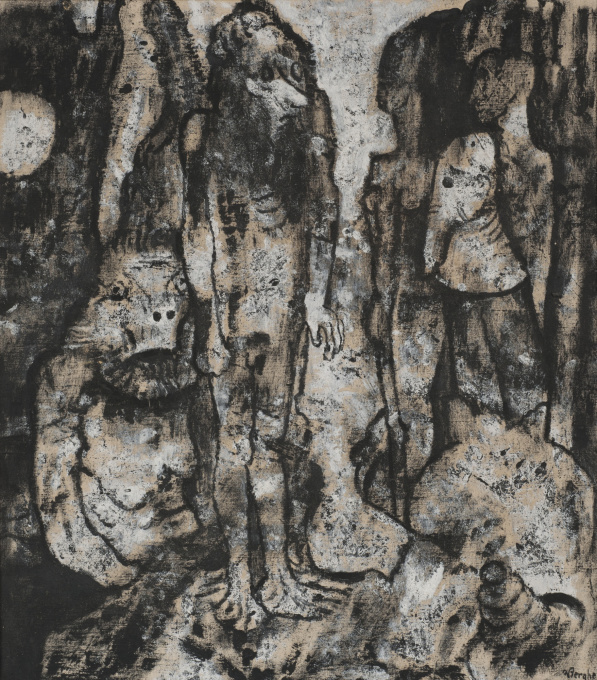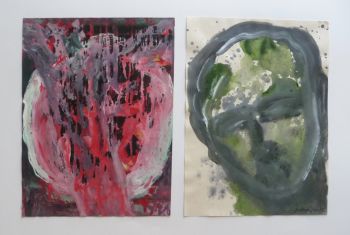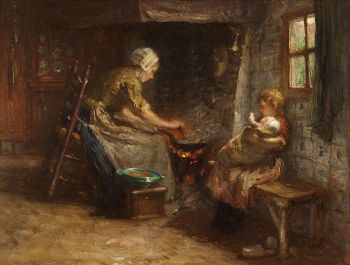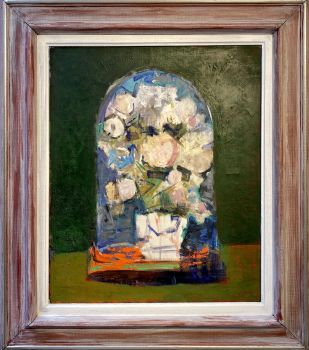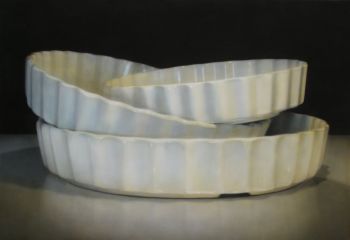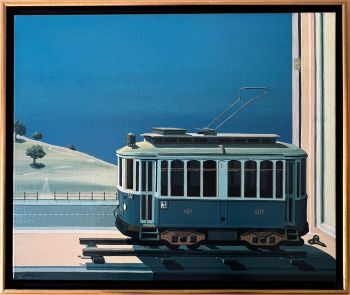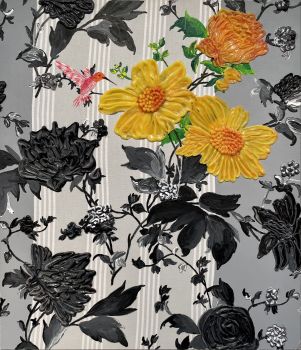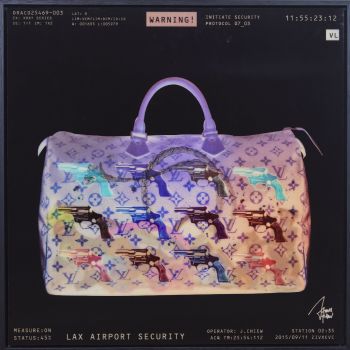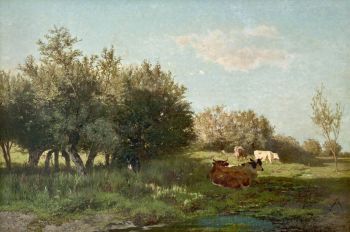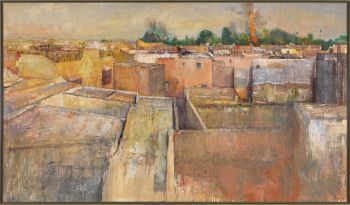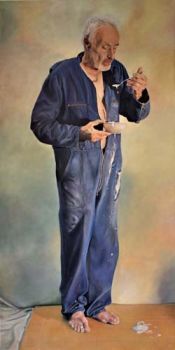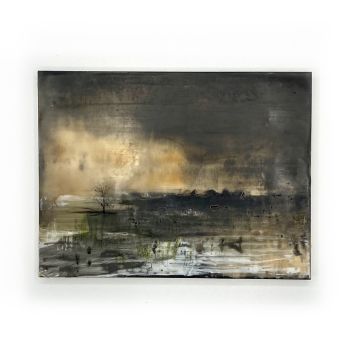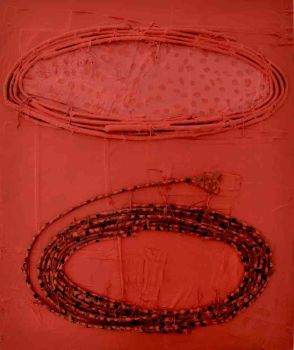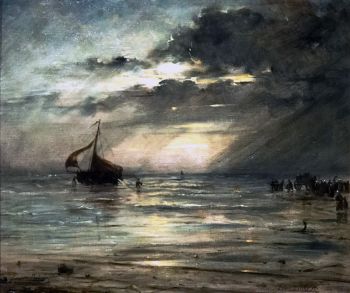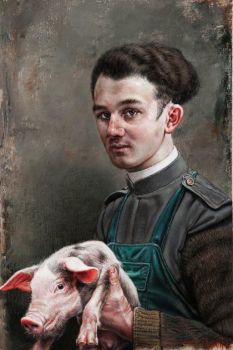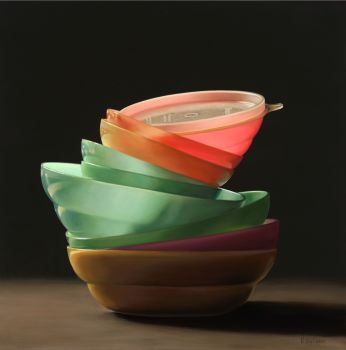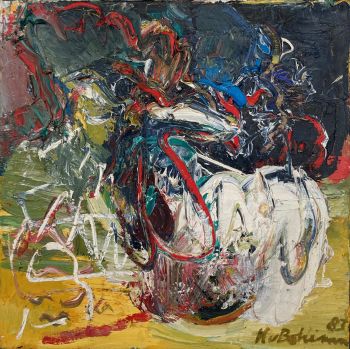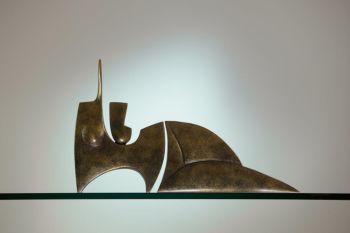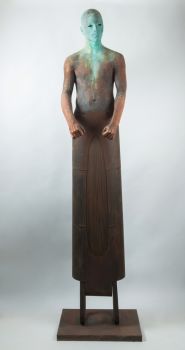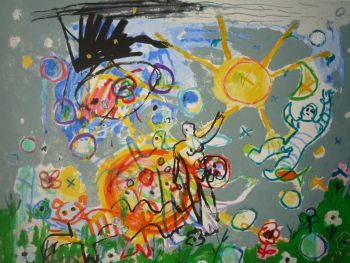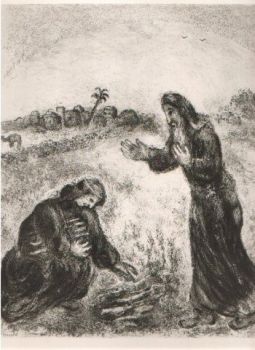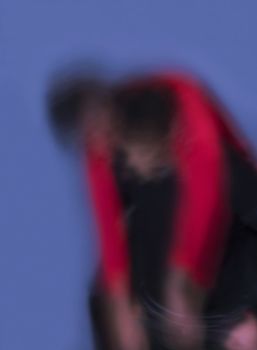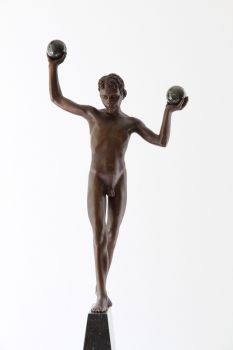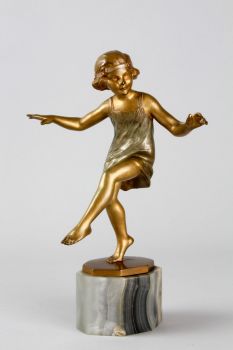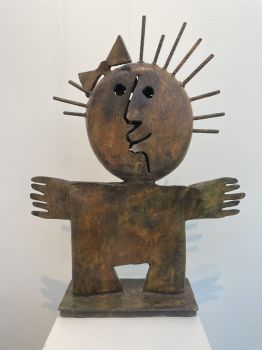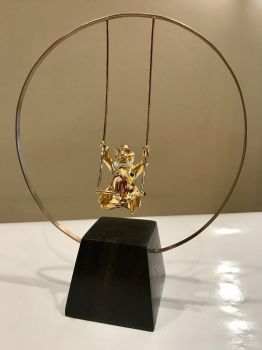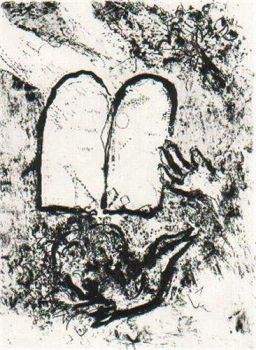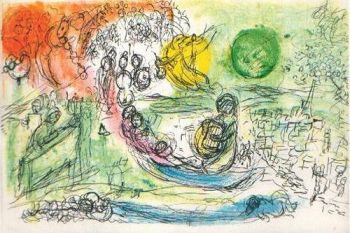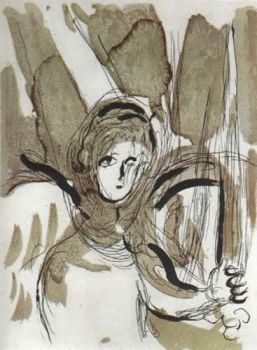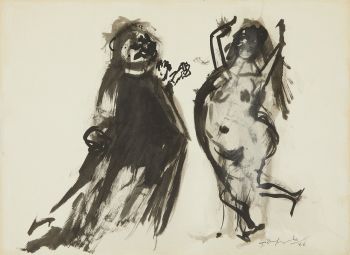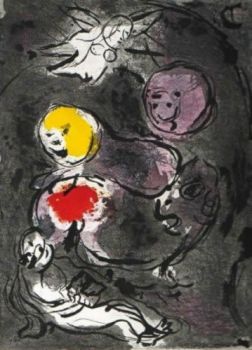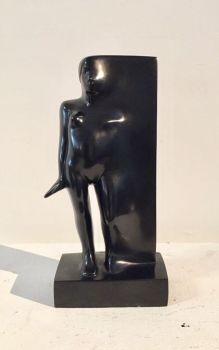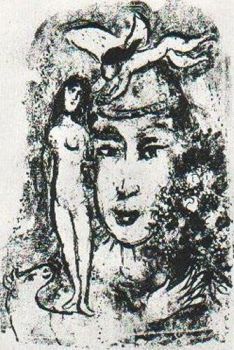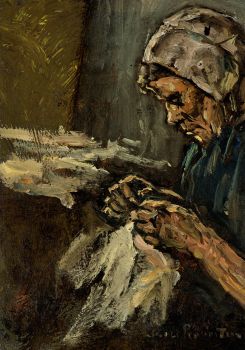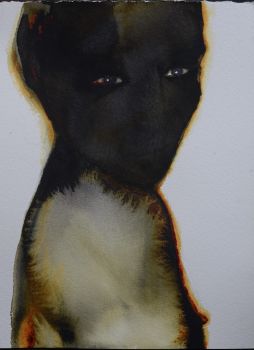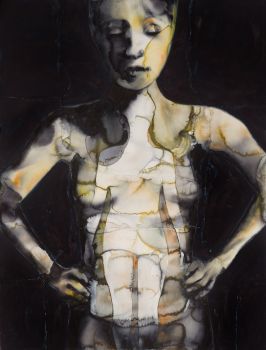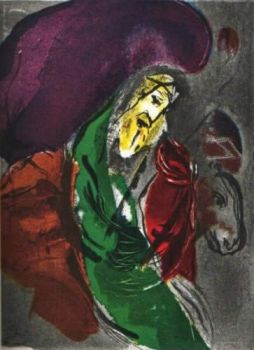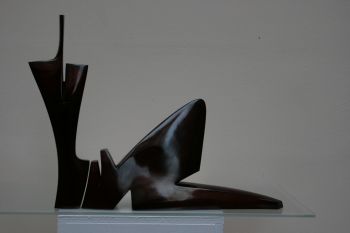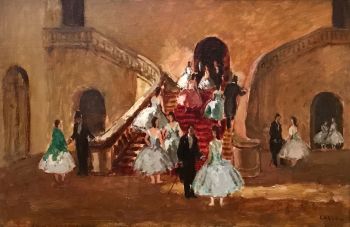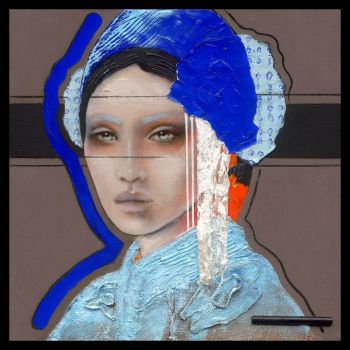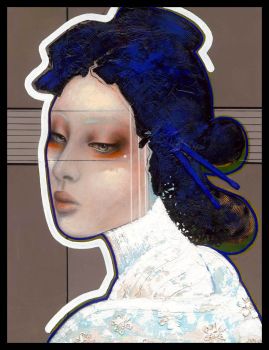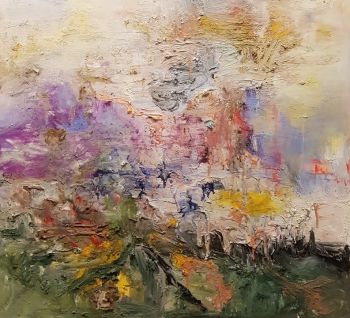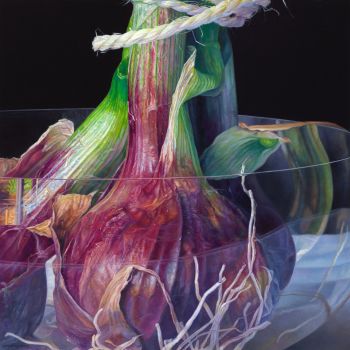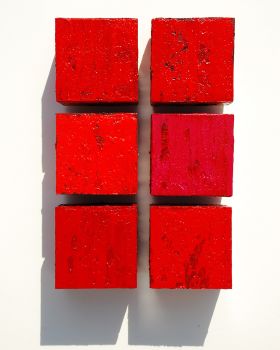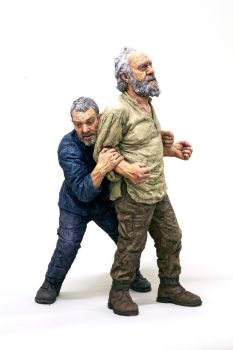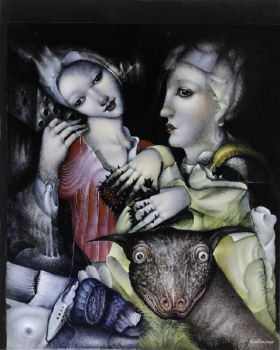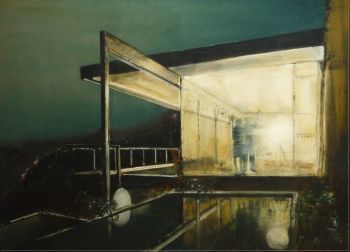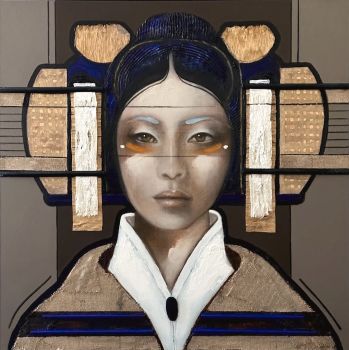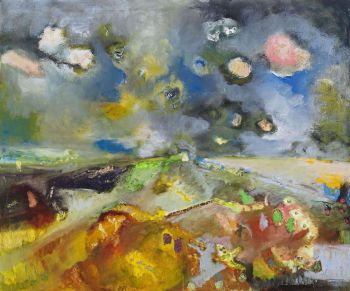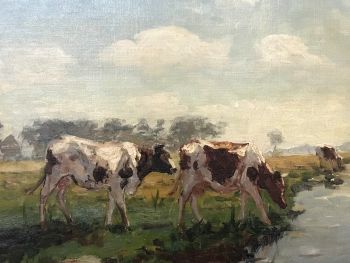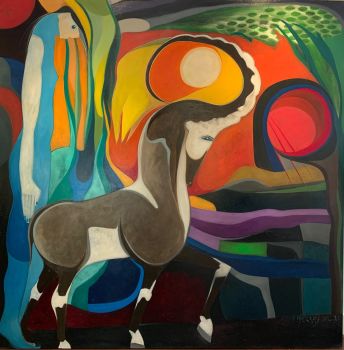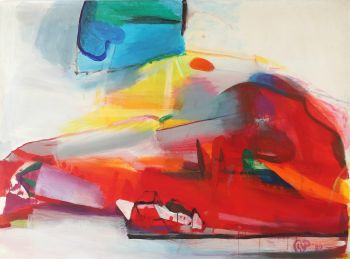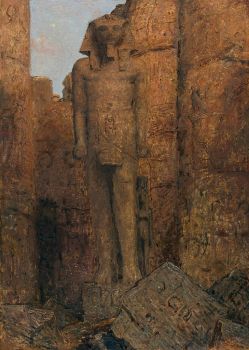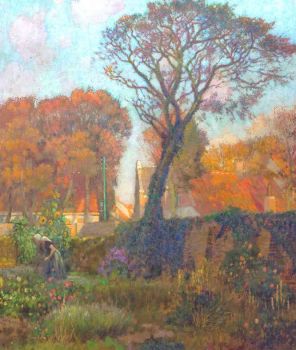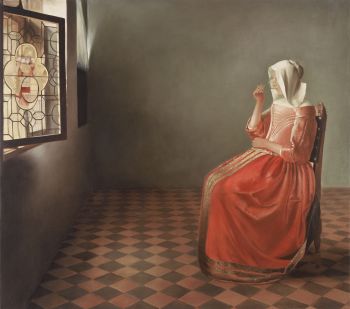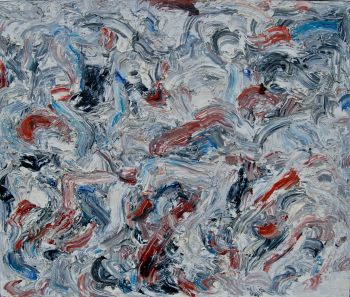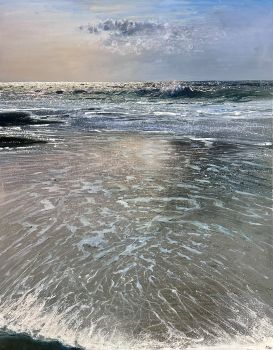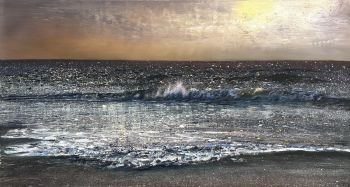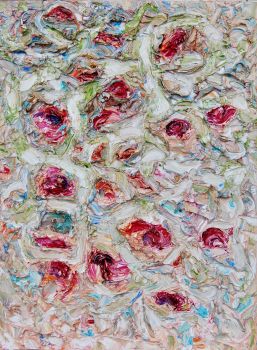La Peur 1930
Frits Van Den Berghe
SegeltuchÖlfarbeFarbe
53 ⨯ 47 cm
ConditionExcellent
Derzeit nicht über Gallerease verfügbar
- Über KunstwerkOil on canvas
53,98 x 47,94 cm.
Signed: lower right ‘FvBerghe’
Provenance: Galerie Le Centaure, Brussels; Dr. S. Simon Muller, Brussels 1932; Auct. Sotheby’s. Paris, 24 March 2017, lot no. 28; Private collection, Belgium.
Literature: Piet Boyens, Frits van den Berghe 1883-1939, Antwerp 1999, no. 680, p.450, ill., as: De Angst.; Emile Langui, Frits Van den Berghe, 1883-1939: catalogue raisonné de son oeuvre peint, Brussels 1966, no. 362, ill., as: La Peur (De Angst).
Frits van den Bergh was the first Flemish expressionist, experimenting different styles. Initially he worked impressionistic, a style he found suitable to express his soul. The subconscious truly fascinated the Belgian artist, therefore Surrealistic elements entered his artworks. Caused by the political and social recession of the 1920s and 1930s, as well as the mental condition of Van den Berghe, subjects such as threat, desolation and fear became more leading in his work. These themes correspond perfectly to the expressionistic style he adopted. Marked by Impressionism, Expressionism and Surrealism, he tries to free himself from the dominant currents by turning to the world of the unconscious and the metaphor. Every image inspired by the real world often seems to move away from it. Around 1927 Van den Berghe choosed the way of surrealism. His manner of painting changed and the subjects became frightening dreams, in which eccentric figures float or fall. La Peur (1930) is an example of his late period in which he was influenced by the First World War and the economic crisis. He painted in tender ochres to dark earth tones, suggested dream images and grotesque hallucinations. With La Peur Van den Berghe put a face on the emotion fear. To him these monstrous figures are an embodiment of the power of the subconscious. Inspired by Max Ernst he found his solution for the processing of his expressionistic painting trend and his own poetic, dramatic and emotional moods. There are erratic figures and surfaces on the canvas that let us know Van den Berghe in all its capriciousness and bizarreness. - Über KünstlerFrits van den Berghe war ein flämischer Maler, Zeichner und Kupferstecher aus Gent. Van den Berghe arbeitete in einer Vielzahl von Stilen und wechselte vom Impressionismus zum Expressionismus und schließlich zum fantastischen Surrealismus. Van den Berghe gilt zusammen mit Albert Servaes, Constant Permeke und Gustaaf de Smet als einer der Mitbegründer der Latem Expressionism Group. Einige der anderen Kunstgesellschaften, in denen er aktiv war, waren L'Art Vivant, Selection und Les Compagnons de l'Art. Er unterrichtete an der Akademie der Künste in Gent, wo er auch studierte. Als Frits 1914 aus New York zurückkehrte, ließ er sich von Jan Sluijters Fauvismus und deutschem Expressionismus inspirieren. Während des ersten Weltkrieges blühte sein Expressionismus auf. 1928 begann Van den Berghe mit der Herstellung von Cartoons für die sozialistische Zeitschrift 'Vooruit', in der er bis zu seinem Tod bleiben sollte. In der Zwischenzeit hatte sich Van den Berghes Stil vom Expressionismus zum fantastischen Surrealismus entwickelt und Albträume, Träume und Halluzinationen in einer starken Farbpalette dargestellt, die eindeutig vom deutschen Surrealisten Max Ernst beeinflusst wurde. Er stellte den Menschen als allgemein besessen und ängstlich dar. Einflüsse mehrerer bedeutender Künstler wie Max Ernst, Egon Schiele, Giorgio de Chirico, Edvard Munch und Leo Gestel sind in seiner Arbeit erkennbar.
Related artworks
Bernardus Johannes Blommers
Het bereiden van de maaltijd1870 - 1914
Preis auf AnfrageStudio 2000 Art Gallery
Gerard Bilders
The 'Uiterwaarden' at Oosterbeek (flood plains)1861
Preis auf AnfrageStudio 2000 Art Gallery
1 - 4 / 24- 1 - 4 / 24
Marius Bauer
The Temple of Ramses II at Karnak Image in Luxor1919
Preis auf AnfrageStudio 2000 Art Gallery
1 - 4 / 24

